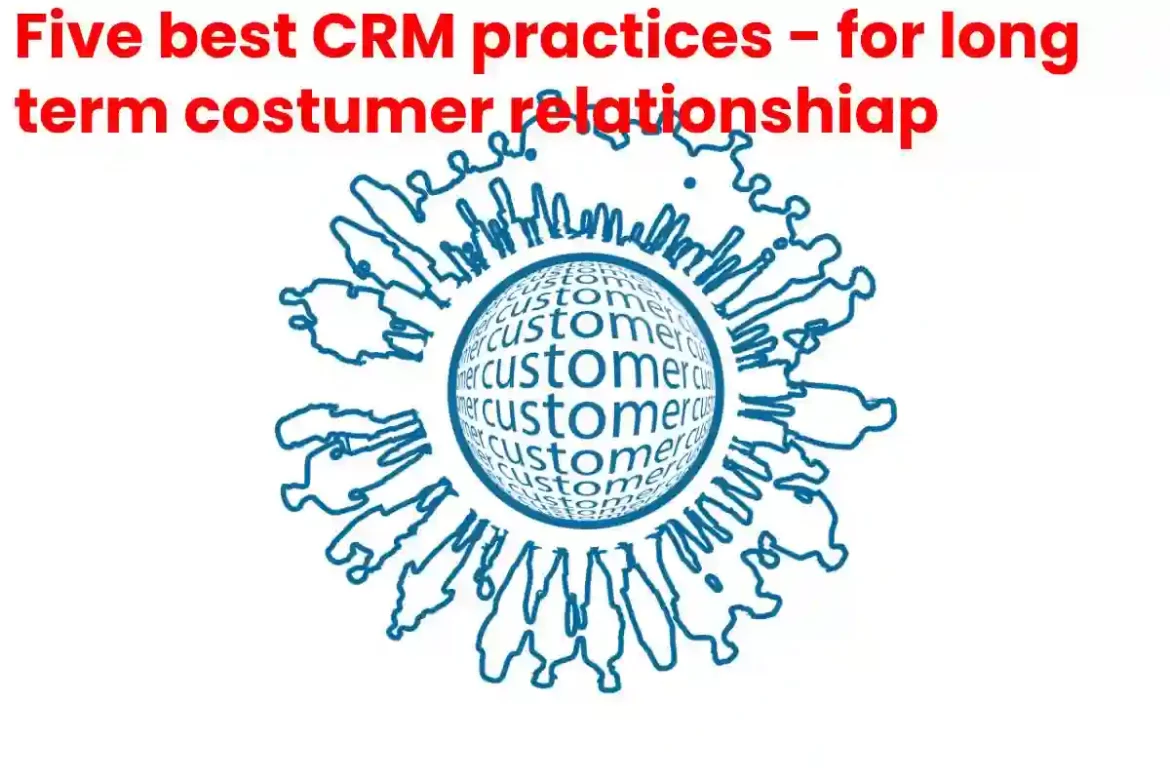Table of Contents
Five best CRM practices
Here are five of the best CRM practices that can help organizations – specifically in marketing, sales, and customer service. If you truly value your clients, you need to not only focus on managing clients but building long-term relationships.
CRM system is only as good as the data
1.- Make sure your customer data is reliable and up-to-date. A CRM system is only as good as the data it contains. So always make sure that any data entered into your CRM system is correct. Review and clean customer data regularly to eliminate redundancies and ensure that information (such as customer name, address, the preferred method of being contacted, and purchase history) is up to date.
“Entering useful and accurate data into a CRM database enables your sales and marketing teams to have a more meaningful understanding of your customer,” said Bruce Swann, senior manager of product marketing for Adobe Campaign. For example, if someone already has a subscription to your newsletter, there is no need to keep inviting them to do so. If a person already regularly attends your webinars, it is a mistake for your sales team to call and ask them to attend. This type of knowledge can help future interaction with the client”.
Have details of the customer’s purchase history
2.- Make sure that everyone who interacts with customers knows their history. Learn about customers’ buying history,” said Mark Draper, an independent project management consultant with CRM experience. “It is essential to have a detailed summary of the customer’s purchase history, including dates, quantities, and terms. Customers frequently want to repeat the previous order, and nothing looks as bad as not knowing what and when. ”
Similarly, it is essential that companies “know the issues/problems with the customer and how they get resolve,” he noted. “Most clients want to continue working with you, and they want to be able to convince themselves that the issues/problems have been resolved and will not happen again.
Know your client’s preferences
3,- Know how and where your customers are interacting with you. “Today, customers can contact a company via email, social media, or the traditional phone call. “Additionally, by understanding their clients’ preferences, history, and context at all points in their journey, companies can genuinely engage with their clients on a more personal level. By implementing the appropriate infrastructure, a customer will experience the same high-quality service every time. ”
“Get involved with your customers where they are already present,” said Eric Bensley, director of product marketing at Salesforce. “In Today’s hyper-connected world, all companies must to provide a seamless service experience across all channels. And customers want to interact with the brands where they hang out – be it on Facebook Messenger, Twitter, video chat or within an application, “he said.
“Companies that engage on these channels not only create happy and loyal customers, but they can also empower these service interactions to become even wiser about their customers.”
organize and analyze the data through CRM
4.- Understand where customers are in the purchasing process/cycle. “People buy when they’re ready, not when you’re ready to sell,” said Clate Mask, co-founder, and CEO of Infusionsoft, a provider of marketing and sales software. “By using a tool to organize and analyze the data, you can determine who is more likely to buy, and who needs an incentive so you can guide them to make the purchase.” This is one of the best CRM practices.
Track you costumer is in the sales process with CRM
5.- Provide the customization that customers want. “Sending relevant and personalized emails based on accurate and timely customer data can increase click rates by 50%,” said Jason Rushforth, vice president and general manager of the Customer Experience Business Unit at Infor, an enterprise software company that specializes in CRM. And “with geolocation, sellers can send personalized messages and offers to customers when they approach the store.”
Similarly, “providing personalized website content and data-driven recommendations from all consumer engagement channels, both online and offline, improves engagement levels,” he said.
“With a CRM, you can track where a person is in the sales process, but you can also get data on the previous consumption of your customers,” said Michael Heiligenstein, Marketing Manager for “Fit Small.” “If you have an item that has a fixed or semi-predictable life cycle, you can estimate when the customer will repurchase it. You can then use your CRM to schedule a follow-up exactly when your customers start considering another purchase. “



